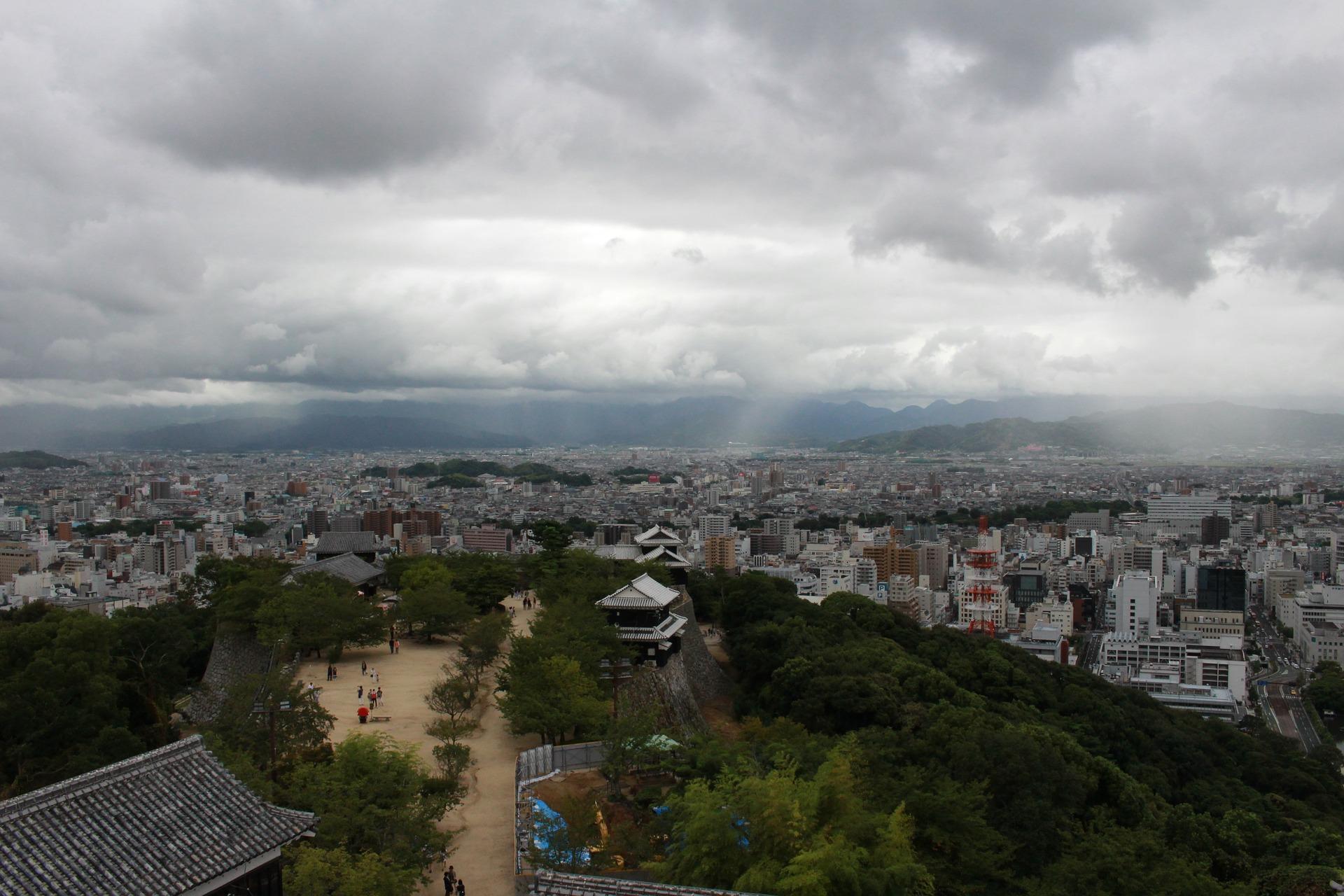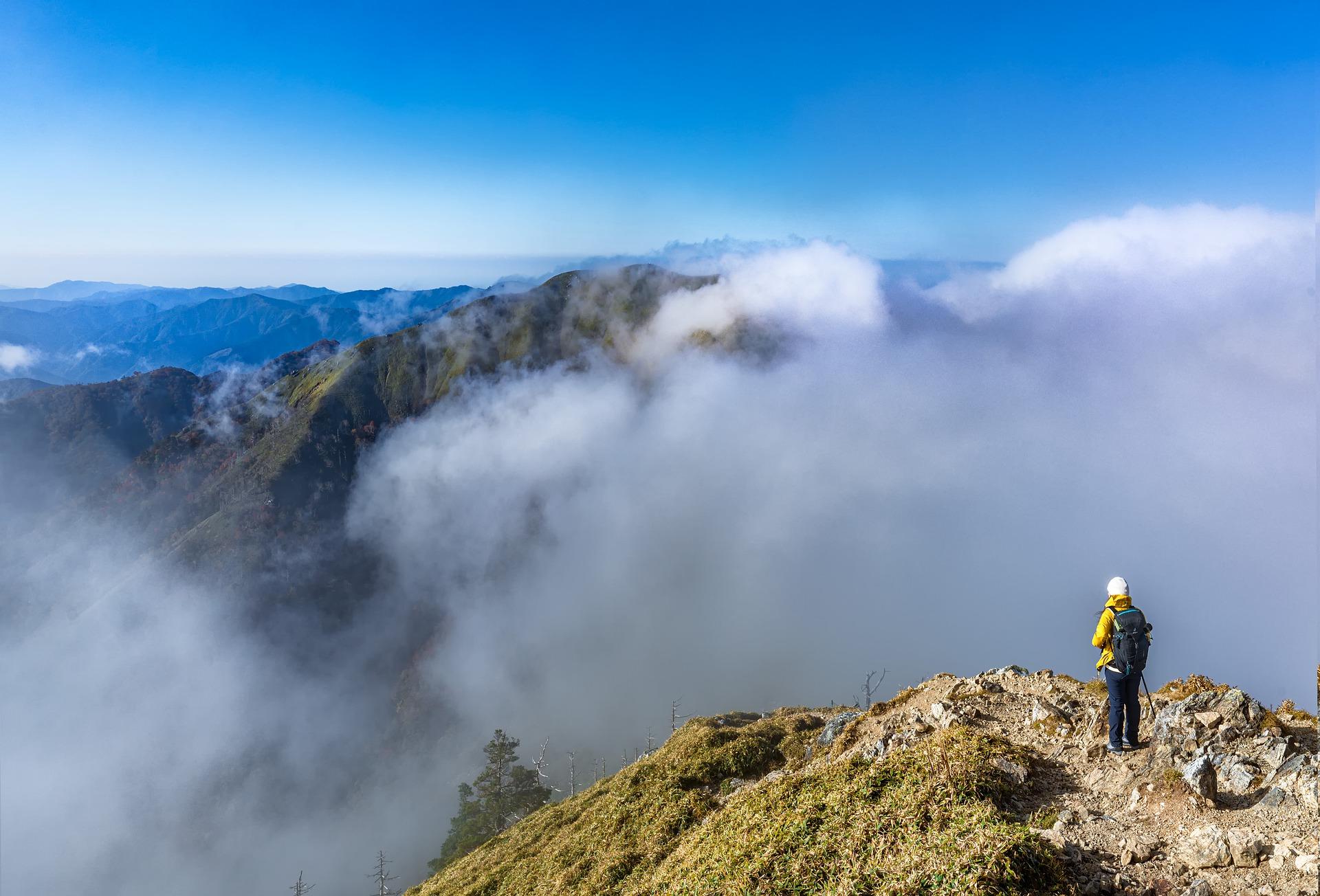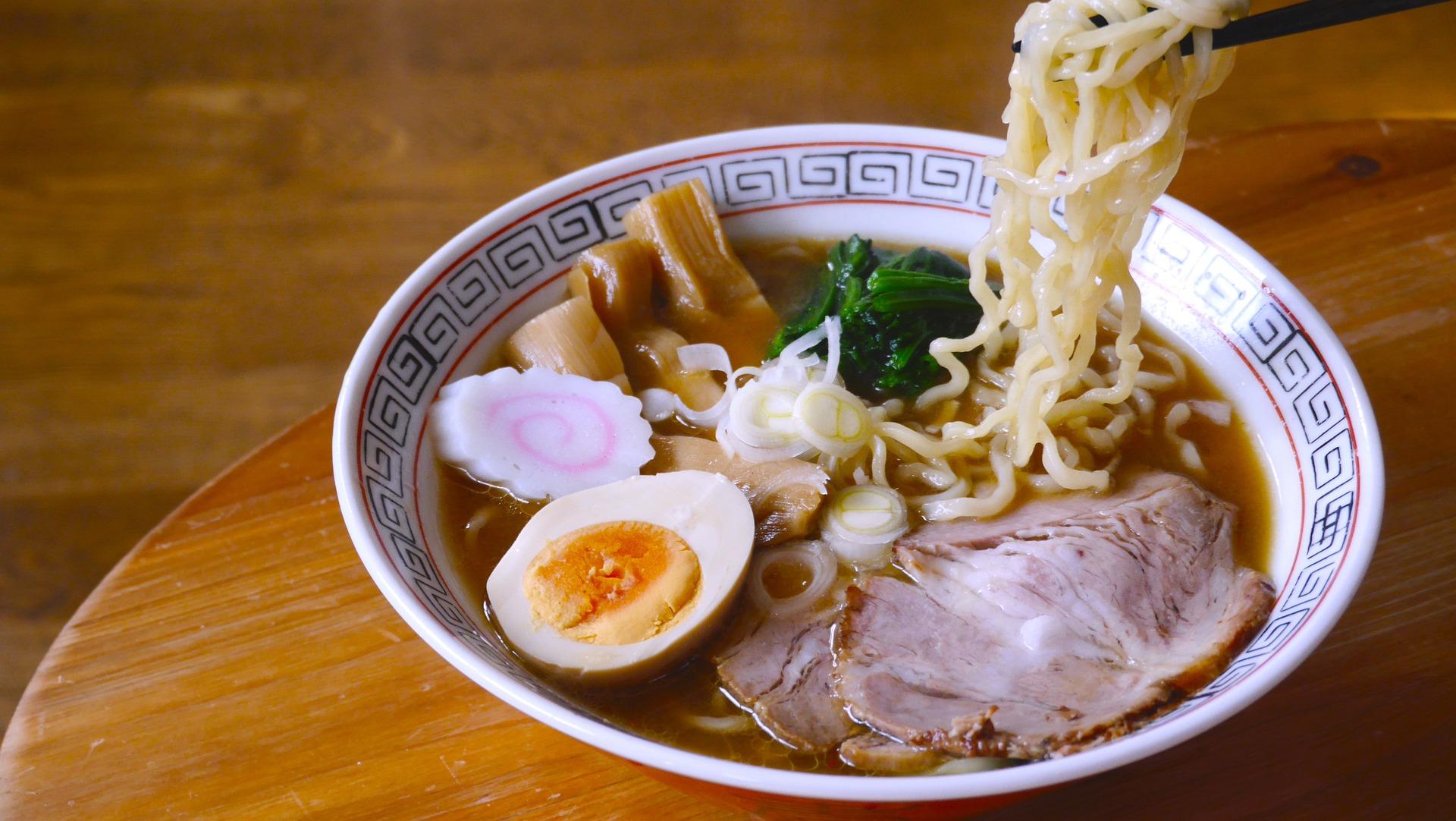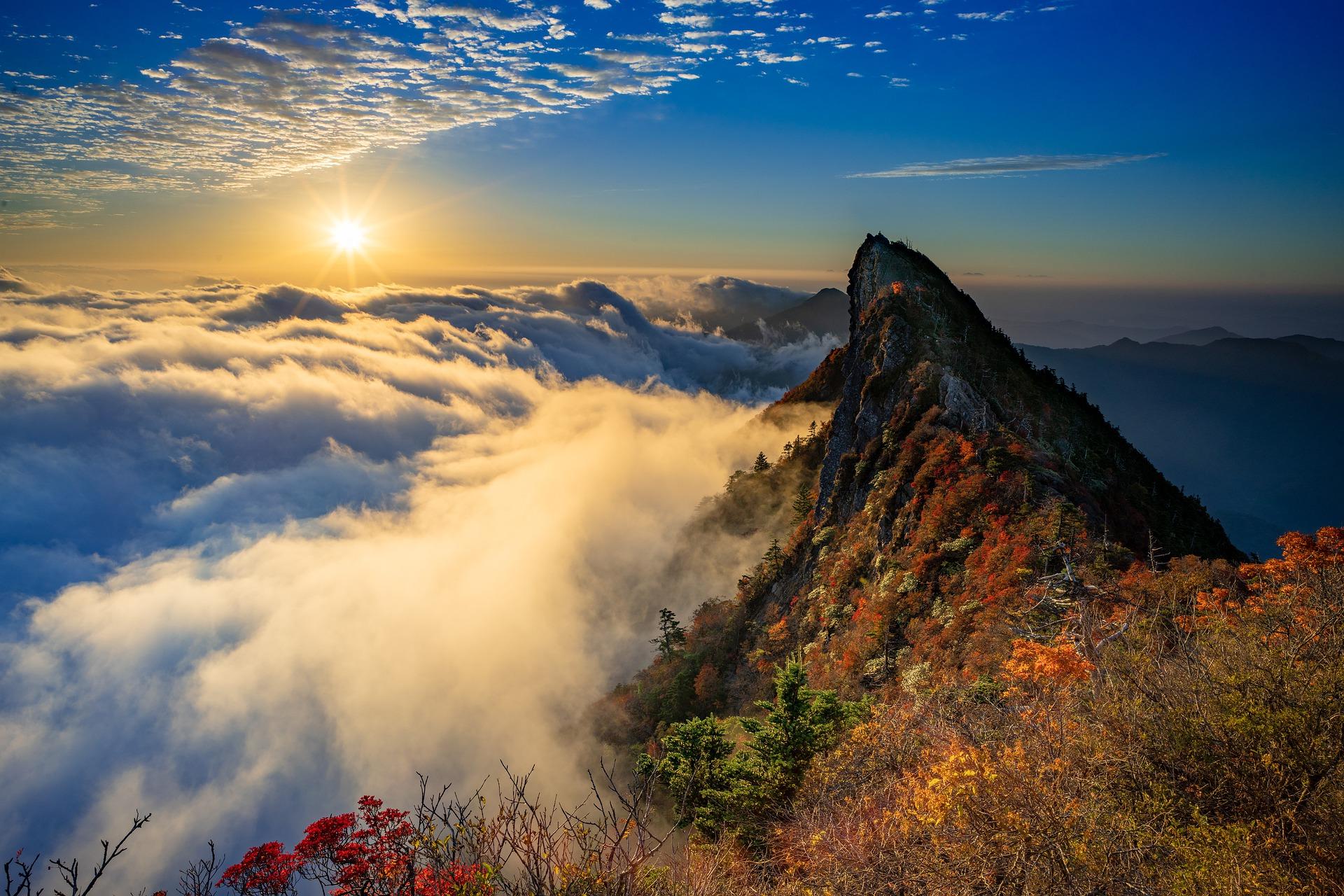If you have asked: which of 4 main Japanese islands is the smallest, then you already know that it is Shikoku. And if you are looking for reasons why you should visit Japan, then, the Shikoku cities you will learn about in this article, are a story worth telling.
Shikoku, Japan's fourth-largest island, by the Seto Inland Sea, is distinct from Tokyo's Honshu. Often overlooked by tourists, Shikoku, home to 4.5 million people across 18,000km², boasts captivating landscapes and a rich cultural tapestry. Despite lacking the fame of cities like Osaka and Kyoto, Shikoku's allure lies in its tranquil ambience. Featured in the New York Times' 52 places to go in 2015, the appeal of Shikoku Japan can be found in its Buddhist temples, vibrant nature, and seasonal wonders.
From cherry blossoms in spring to snowcapped mountains in winter, Shikoku offers a serene retreat from Tokyo's Shibuya and Akihabara. 
Shikoku is a great place to see cherry blossoms if you're there at the right time of the year. (Source: Couleur)Calm and serene, Shikoku Japan offers many reasons why you should visit Japan. In terms of which of 4 main Japanese islands is the smallest, it is Shikoku which is known for Geishas, Okinawa, its beaches and the peaceful feeling that mirrors traditional Japanese tranquillity.
Shikoku offers lush forests, clear rivers like the Shimanto for canoeing, and the scenic Ashizuri-Uwakai National Park with its cliffs and coastal paths. You can also explore "Monet's Garden" in Kitagawa, a recreation of the French artist's inspiration from Edo period ukiyo-e woodblock prints.
With 88 temples, Shikoku is a cultural haven, perfect for those seeking Japanese tradition.
So, if you are wondering which of 4 main Japanese islands is the smallest, it is Shokuko where tradition, culture and tranquillity are its hallmarks.
Other islands and reasons why you should visit Japan. .

Visiting the Main Shikoku Cities
If you are looking for reasons why you should visit Japan. Shikoku, the smallest of the four main islands offers compelling invitations. Shikoku, meaning "four provinces," and Shikoku cities that are the capital of each:
- Ehime, with the capital Matsuyama
- Kagawa, with the capital Takamatsu
- Kochi
- Tokushima.
If you're planning a trip to Shikoku, Matsuyama is a cultural gem you should not miss. Instead of opting for the bustle of Tokyo, consider doing the extreme opposite and venturing off the beaten track to explore the unique landscapes and authentic traditions of Matsuyama.

Shikoku Japan boasts several significant tourist spots that feature the cherry blossoms, hot springs, and iconic Japanese architecture that is typical of the island. There is also a well-preserved 19th-century castle, accessible by cable car that offers a stunning view of the Seto Inland Sea.
In the medieval city centre, the Dogo Onsen district, you will find the famous Studio Ghibli's Spirited Away bathhouse. The Ishite-Ji Buddhist temple is also a must-visit in Matsuyama. Don’t forget to explore the charming port city of Takamatsu for a tranquil walk or bike ride. And while Kochi is touristy, its 17th-century castle, Chikurin-Ji temple, and Katsurahama beach make it a popular destination too.
So, besides the local cuisine, as you can see there are plenty of good reasons to visit the Shikoku cities.
Now find out why you should visit the island of Kyushu!
Enjoy the Traditional Customs in Shikoku
When it comes to reasons why you should visit Japan, the local customs and authentic traditions of Shikoku should be amongst them, especially as you can participate in some of them!

For instance, a widely embraced tradition in Shikoku is the pilgrimage to its 88 temples which covers an impressive 1,170km. Pilgrims, known as henro, dedicate 1 or 2 months annually to this 1,200-year-old journey. Participation is open to all; however one isn't obligated to visit all of the 88 temples. The pilgrimage follows a specific order across the four provinces:
- 1-23: Awakening (Tokushima)
- 24-39: Discipline (Kochi)
- 45-65: Enlightenment (Ehime)
- 66-88: Nirvana Upon completion, pilgrims ascend Mount Koya.
While the pilgrimage can be done by car or bus, walking is preferable. Attire typically includes a white shirt and an Asian hat, with respect for temple customs. Another quintessentially Japanese experience in Shikoku is visiting onsens, which offer many relaxation and skincare benefits. Lastly, participating in traditional festivals like the Awa Dance Festival in mid-August in Tokushima is a wonderful way to immerse yourself in Japanese dance.
Why you should visit Honshu. .
The Incredible Cuisine of Shikoku Japan
Beyond its breathtaking sights, Shikoku is a culinary haven that you will find is worth writing home about. Notably, the town of Naruto, home to 64,000 residents, and famous for its coastal tidal whirpools, is also worth visiting for its local cuisine. Most interestingly, Narutomaki, a slice of cured fish with a distinctive pink or red spiral, originates from Naruto and is believed to symbolise the natural phenomenon of the town's renowned whirlpools. In fact, you won’t want to miss the chance of indulging in Shikoku’s culinary delights because each dish has a unique story.

Explore the Iya Valley, nestled in the heart of Shikoku's mountains, or embark on a boat cruise down the Oboke Gorge. You could also delve into Japan's Meiji period by visiting the traditional village of Uchiko in Ehime, where Kabuki theatre awaits to entertain. The breathtaking views at the Kotohira-g? Shinto shrine are also worth mentioning as a must-see.
In the realm of Shikoku's cuisine, don't miss trying tataki—a dish featuring seared sliced meat or fish with a delicious sauce. Indulge in Kagawa's local speciality, sanuki udon, which is tuna udon noodles in a seaweed broth.
On the whole, Shikoku's culinary scene, predominantly seafood-focused, offers sushi, ramen, yakitori, and udon.
Of course, this brief guide provides only a glimpse into what Shikoku has to offer, but for more insights on reasons why you should visit Japan and its main islands, read our accompanying articles in this series.
Do you know much about Hokkaido?
To truly unlock the secrets of Japan, you need to know some Japanese and you could do this by connecting with a private tutor on Superprof. The platform boasts a plethora of Japanese tutors who offer face-to-face, group, or online tutorials. Not only that, but each option has merits and drawbacks to allow you to tailor your choice based on personal preferences and budget constraints.
Group tutorials present a cost-effective option, ideal for learning alongside friends, family, or fellow Japanese enthusiasts. And of course, by sharing the tutor's time and expertise, the financial burden is eased. However, with multiple students, personalisation to individual learning needs may be limited.
For a more personalised and immersive experience, there is no doubt that one-on-one tutorials offer unparalleled benefits. Here, the tutor tailors the lessons to your learning style and provides ample opportunities for Japanese language practice. Although these sessions are generally pricier, the investment is cost-effective, as every minute is dedicated to your language mastery.
In today’s digital world you could also extend your search beyond geographical boundaries by exploring Japanese tutors throughout the world. All you need to benefit from the flexibility and affordability of this option is a stable internet connection and a webcam. Remember that since online tutors avoid travel expenses, they often charge less than their face-to-face counterparts.
Another important benefit is that many Superprof tutors offer a free initial lesson which will enable you to sample different tutors and tutorial formats before committing. In fact, this trial-and-error approach ensures you find the perfect fit to embark on your Japanese language-learning journey.
So, whether you prefer the camaraderie of group dynamics, the personalised attention of one-on-one sessions, or the convenience of online learning, Superprof opens the door to a rich and diverse world of Japanese language education.
So to answer your question, which of 4 main Japanese islands is the smallest? Shikoku of course, but that doesn’t mean it might not be the best. You’ll have to read about the other islands to find out.















